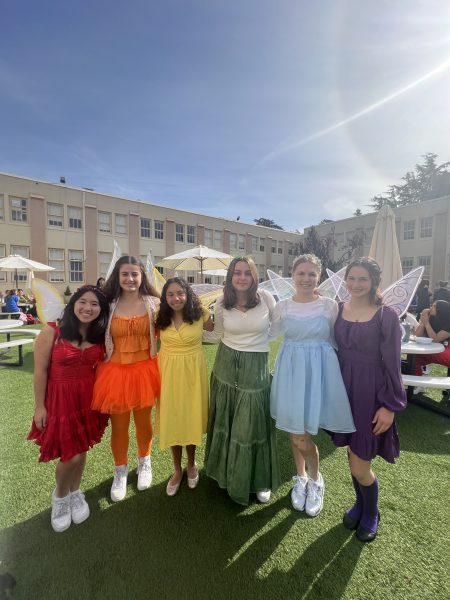AAPI Heritage Month: A student perspective
The Catalyst / Madi Whitt
Whitt reflects on her family’s Korean heritage during AAPI Heritage Month.
The month of May is Asian American and Pacific Islander’s (AAPI) Heritage Month. It is a time to highlight and celebrate the influences that the AAPI community has had on our country. America has a rich history that stems from the involvement of Asian Americans and Pacific Islanders, but it is many times overlooked or forgotten.
Asian immigrants first began to arrive in the United States in the 19th century. Since then, the Asian population has continued to grow significantly, especially in San Francisco. Like other minorities, discrimination has been common, examples ranging from the Japanese internment camps in World War II to the hate crimes spurred by the recent COVID-19 pandemic.
I am half white and half Asian, and this month for me is a way to learn about my Asian heritage and reflect on my struggle to appreciate the history of my race.
At nine months old my mother was adopted from Seoul, South Korea. She grew up in a white, suburban, middle class family outside of Baltimore, Maryland, and as you can imagine, therefore inherited none of the Asian culture. By consequence, neither did I.
Growing up, I did not feel that I was missing out on anything. All my friends and family were white, and I felt no connection with my Asian heritage, never thinking of myself as anything other than a white American.
As I grew up, however, I started to experience and notice more microaggressions and direct comments that affirmed that everyone else only saw my Asian side. Comments on my eyes and face shape or misinformed assumptions about my parents or grandparents made me self-conscious and stuck with me. Similar to many Asian children, I was embarrassed that people recognized this side of me. I wanted to be “normal,” like everyone else.
At times, I still struggle with accepting and appreciating my Asian identity. However, learning about the ways in which Asian culture ties into the history of the U.S. and how important the AAPI community is in forming the country we see today has helped me to overcome some of these feelings.
The U.S. is commonly described as a “melting pot.” That term summarizes the diversity that the country was built upon. The benefits of that diversity are lost if we do not learn about how everyone, of all different races, contributed to where the country stands today.
This is why it is so important to use AAPI Heritage Month as an opportunity to learn about the culture of such a large community in the U.S. Schools in America should take on more of a responsibility to teach this rich history to young students.
The U.S. has a bad habit of white-washing our history. The effects of this lack of representation manifest in the younger generations of minorities. Children are experiencing a desire to distance themselves from anything they believe makes them less American. If they don’t want to identify with their culture, the U.S. loses its “melting pot” culture as well.
It is important to recognize and teach students that one’s race does not affect one’s ability to be American. AAPI Heritage Month is important to every single inhabitant of the United States, not just American Asians and Pacific Islanders, because it highlights that diversity is, and has always been, a defining aspect of this country. It is what makes us unique.






